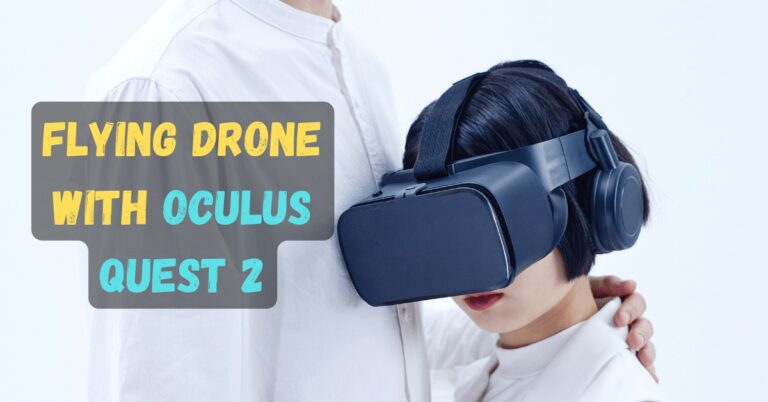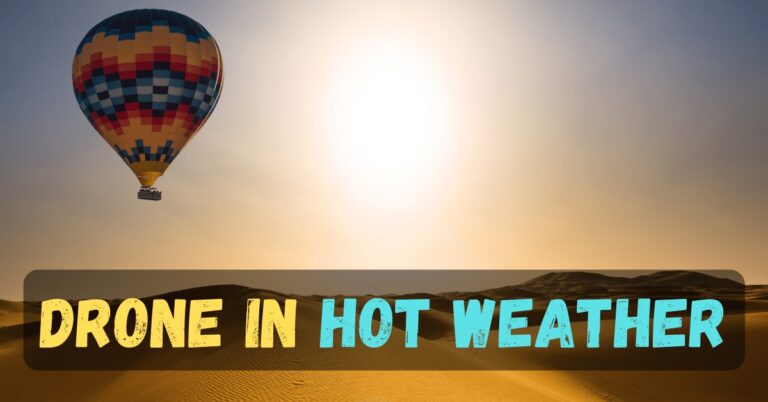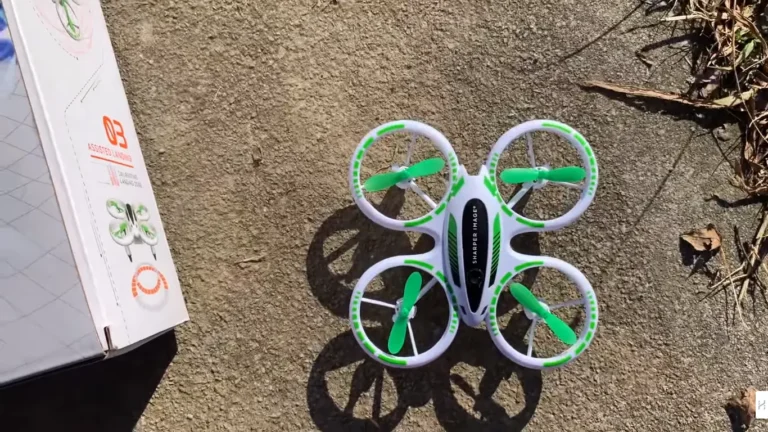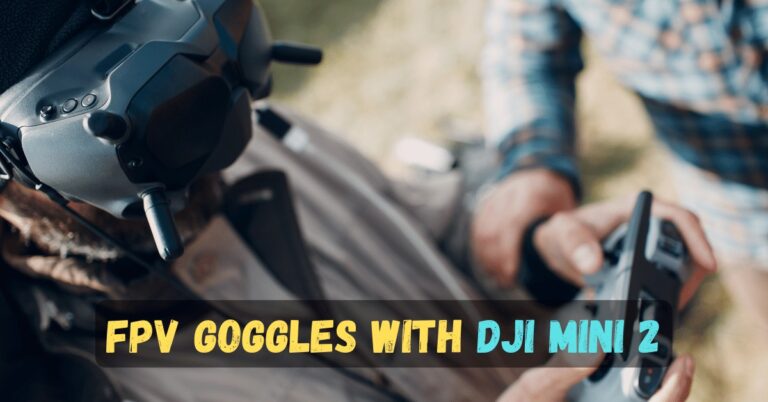How to Fly a Drone? Essential Tips for Safe and Successful Drone Flying (2023)

Drones are gaining popularity, and it’s no wonder why. They serve a wide range of purposes, like snapping cool pics, racing, and even mapping.
But for beginners, taking flight with a drone can be a bit of a head-scratcher. No worries, though. This guide has got your back, and it’s here to teach you the A to Z of drone flying, easy peasy.
We’ll kick things off with the drone basics – how to boss your drone around, sidestep common goof-ups, and stay on the right side of the law.
Then, we’ll dive into some nifty stuff, like getting those epic aerial shots, mastering different weather conditions, and using drones in various industries.
When you finish reading this guide, you’ll be the pilot of the hour, ready to soar the skies with confidence and all the legal boxes ticked.
Key Takeaways
- Master drone basics before taking to the skies confidently.
- Learn and follow drone rules and regulations for safe flying.
- Troubleshoot common drone issues for smooth operations.
- Capture stunning aerial photos with proper camera settings.
- Achieve cinematic shots with slow, steady movements.
- Plan, practice, and know your drone for aerial photography success.
- Fly safely in various weather conditions using expert tips.
- Utilize drones in agriculture and construction with precision.
- Obtain necessary licenses for commercial drone use in the USA.
- Prioritize safety when flying near people and buildings.
Learning the Basics
Now, first of all, in this chapter, we are going to learn the basics because if you don’t know the basics of flying a drone or anything, then you won’t be able to master it. And it is the reason; first of all, let’s learn the basics.
How to fly a drone?
Flying a drone is a blast! But before you kick off your drone adventures, it’s essential to get cozy with your drone and its nifty controls.
Spend a bit of time getting to know the settings, how long that battery lasts, and the traffic rules up there. Most drones come with newbie-friendly modes and simulators so you can practice flying without any worries.
Now, speaking of controls, they’re pretty similar across the board. You’ve got two joysticks and a bunch of buttons. The left joystick takes care of height and spin.

Push it up, and your drone goes up; push it down, and it descends. Left or right, and your drone does a cool spin. The right joystick, on the other hand, guides your drone’s movement. Push it in any direction, and off it goes!
But hold up, before you take off, do a quick pre-flight checklist. Make sure that the battery’s good to go, calibrate that compass, and ensure those propellers are nice and snug. Once everything’s a-okay, put your drone on a flat surface and use that left joystick to lift it off.
Now, when you’re soaring through the skies, safety is key. Stay clear of folks and critters, and avoid any no-fly zones. With a bit of practice and patience, you’ll soon be a drone master, capturing epic aerial shots like a pro!
What are the essential steps to fly a drone safely?
Flying a drone safely is a must-do, and it’s not as tricky as it sounds. So, before you send your drone into the skies, let’s get acquainted with it and those buttons.
Take a bit of time to check out the settings, see how long the battery lasts, and know the local air traffic rules. Many drones even come with training wheels – beginner modes and simulators to practice without any stress.

Now, before you hit the launch button, there’s a quick to-do list. Check that battery, calibrate the compass (think of it like your drone’s GPS), and make sure those propellers aren’t going anywhere. When all are set, put your drone on a nice flat spot and use that left joystick to make it soar.
When you’re up there, remember the safety dance. No flying near people or pets, and steer clear of no-go zones.
Follow your local aviation rules, and keep your drone in your line of sight. If it’s a busy place, make sure you keep a good gap between you and any other flying machines.
And last but not least, keep your eyes peeled! Look out for trees, buildings, and those pesky power lines. If you’re over water, play it safe and stay away from the surface.
Read More: https://skbestgadgets.com/can-you-bring-a-drone-to-the-bahamas/
What are the common mistakes to avoid when flying a drone for the first time?
Flying your drone for the first time is a real thrill, but let’s steer clear of the oops moments that can lead to crashes or headaches. Here are some goofs to avoid on your maiden drone voyage:
- Ignoring the Rules: Yep, there are rules in the drone world too. Register your drone as needed, and follow those air traffic laws (stay below 400 feet, away from airports, and clear of people and emergencies).
- Hugging Obstacles: Drones are friendly, but they don’t like hugs with trees, buildings, or power lines. Keep your eyes peeled and don’t get too cozy with these things.
- Going AWOL: Stay in touch with your controller and watch out for anything that might mess with your signal. Losing control mid-flight isn’t fun.
- Not Getting Ready: Do a quick pre-flight check. Battery? Check. Compass calibrated? Check. Are propellers on tight? Check. Now you’re good to go!

By dodging these slip-ups, you’ll be soaring high with your drone like a pro.
Are there any legal requirements for flying a drone?
Yep, there are rules when it comes to drone flying. These rules differ depending on where you’re soaring through the skies. In the good ol’ USA, the Federal Aviation Administration (FAA) is the boss of drone rules. So, before you send your drone on a mission, here’s the scoop.
If you’re just out for some fun and want to share cool drone shots with your pals, you can get up and running in less than an hour. All you gotta do is pay a small registration fee and breeze through a basic knowledge test. Easy peasy.
But, if you’re looking to make some cash with your trusty UAV, you’ll need to step up your game. That means tackling a more serious exam and snagging that Part 107 certification.
Now, here’s the deal. If your drone tips the scales at more than 8.8 ounces or 250 grams (and most do), you’ll need an FAA ID number. No biggie, it’s just 5 bucks. Besides registering your bird, you’ve got to play by the sky rules.

These include staying below 400 feet, keeping an eye on your drone, steering clear of no-fly zones, avoiding other aircraft (especially around airports), not droning over crowds, stadiums, or emergencies like fires, and not droning under the influence.
Before you hit the skies, get to know the drone rules in your neck of the woods. Safety first, right?
Troubleshooting
Okay, now that you have learned about the basics, let’s learn about troubleshooting. You know when you are trying to do something there will be so many problems that you will have to solve on your own. So let’s dive in.
Why is my drone not taking off properly?
So, you’re all pumped up to send your drone soaring, but it’s acting like a stubborn kid who won’t leave the ground. Don’t sweat it; there could be a bunch of reasons behind this drone drama.
The usual suspects include a grumpy battery, a shaky connection to your controller, wonky calibration, or trying to break the rules by flying where you shouldn’t.
Oh, and here’s a classic rookie move: trying to take off before your drone and controller have a heart-to-heart chat.

If your drone is all powered up and connected but refuses to budge, here’s a trick to try. Pop the battery out and pop it back in for a little reset.
Give that battery a quick once-over – no Sherlock Holmes skills are needed, just look for any obvious damage. If you can, check its status on your controller. And hey, if you’ve got a spare battery lying around, throw that in and see if your drone feels like cooperating.
Now, if your drone’s doing a wild flip like it’s auditioning for a gymnastics team, that’s a whole other story. If it’s doing the same flip routine every time, blame it on the Electronic Speed Controller (ESC). Or maybe the propellers got cozy with the wrong motor. And don’t rule out a wonky gyro calibration.
In a nutshell, if your drone’s not taking off smoothly, start with the basics: check that battery, sort out any connection kinks, and make sure that calibration’s on point. If you’re still stuck, it might be time to call in the drone whisperers for some professional help.
How do I calibrate my drone for better flight performance?
Getting your drone calibrated right is a must for a smooth and precise flight. Whether you’re a pro pilot or just flying for fun, knowing the calibration drill is key to getting the most out of your bird. Here’s how to do it:
Find a Nice, Flat Spot: Before you get into calibration mode, scout out a spot that’s wide and level, free from pesky obstacles. Think parks or big open fields – perfect for your drone’s dance routine.
Power Up Your Gear: Fire up your drone and controller. Make sure that the drone battery is juiced up for a hiccup-free calibration session. Once both buddies are on, make sure they’re besties by establishing a solid connection.

Dive into Calibration: Use your trusty controller to dive into your drone’s calibration settings. Usually, you’ll find this in the drone’s app or the controller menu. Look for “Calibrate” or “Settings” to kick things off.
Show Some Love to the Compass: First on the calibration list is the drone’s compass. This step is all about nailing down the right direction.
Follow the on-screen cues or check your drone’s manual for specifics. Usually, it means spinning the drone around in all directions.
Get the Accelerometer in Line: Now, it’s the accelerometer’s turn. This bit is crucial for keeping your drone steady in the air.
Again, follow the screen or your manual’s guidance. It typically involves placing the drone on a flat surface and following prompts to make sure it’s level.
Take It for a Spin: Once the calibration party is over, it’s time for a test flight. Send your drone on a short journey and test its balance, moves, and responsiveness. If anything seems off, don’t sweat it – just go back to step 3 for a re-do.
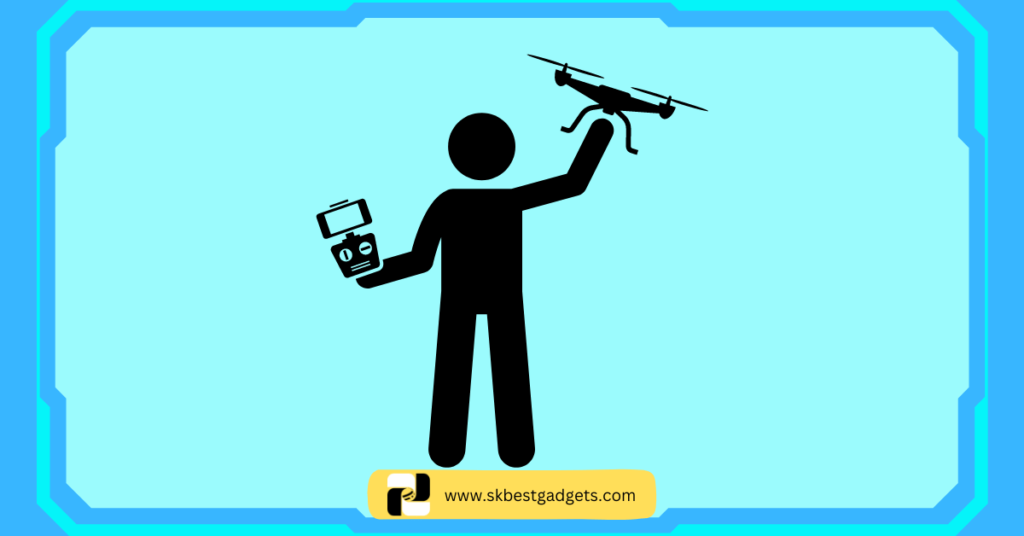
With these simple steps, you’ll have your drone tuned up and ready to rock. Like any tech buddy, your drone needs a little TLC to stay at its best.
What should I do if my drone crashes during a flight?
If your drone takes an unexpected tumble mid-flight, don’t sweat it – there are a few things you can do to get it back in tip-top shape. Here’s the lowdown:
- Track it down: After a drone mishap, use its GPS or any other nifty tracking gizmo you’ve got hooked up to it to find your lost buddy.
- Bye-bye battery: Once you’ve got your drone back in your clutches, the first order of business is to yank out its battery.
- Give it the once-over: Take a good look for any obvious signs of damage – dings, bumps, swelling, you name it. Don’t miss a thing.
- Scrutinize the body: Give your drone’s body a good cleaning – it’s like giving it a spa day. Check it out meticulously for any cracks, dents, or breaks.
- Propeller patrol: Keep an eye on those propellers. Any chips, dents, or cracks need your attention. They’re usually the ones that take the hardest hit.
- Fittings focus: Zoom in on the motors. Loose mounts can lead to shaky flights. Make sure everything’s snug and secure.
- Wire check: Drones have a tangle of wires doing all the heavy lifting. Look out for any loose or damaged ones that might mess with your drone’s mojo.
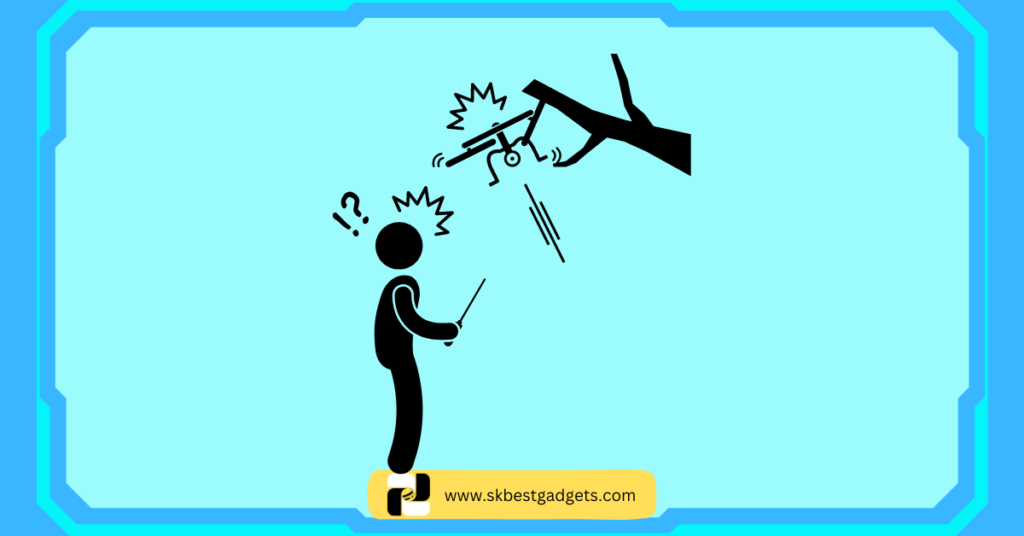
By sticking to these steps, you’ll have your drone back in action after a crash and be in the know about any hiccups it might have picked up along the way. If you’re feeling a bit lost, don’t hesitate to reach out.
Drone Photography/Videography
Okay, now let’s come to the point and learn about videography and photography with your drone. It is so important to know because if you have bought your drone for just videography and photography then learning is also important.
What camera settings are ideal for drone photography?
When it comes to drone photography, nailing the right camera settings is like finding the perfect recipe. Here’s the scoop on what matters most:
- Shutter Speed: This one’s a big deal. A fast shutter speed is your BFF for snapping sharp shots while your drone’s on the move.
- ISO: ISO plays with how sensitive your camera is to light. For aerial adventures, keep it low to dodge noisy, grainy pics.
- Aperture: Think of this as your light gatekeeper. A small aperture (that’s a high f-stop number) works wonders for capturing everything in crispy focus.
- White Balance: Don’t mess up the colors! Get your white balance spot-on for the lighting conditions you’re working with.
- Focus: Blurry shots? No thanks! Ensure your camera’s focus is razor-sharp. Many drones have auto-focus, but you can also give it the manual touch if needed.

Tweak these settings, experiment a bit, and soon you’ll be taking drone pics that’ll make your pals go “Wow!”
How can I achieve smooth cinematic shots with my drone?
If you want to nail those cinematic shots with your drone, there are a few tricks up your sleeve. First off, take it slow.
Slow and steady movements make it look like you’re shooting from a big fancy helicopter, giving your footage that extra oomph. Smooth acceleration and deceleration are key to avoiding shaky shots and those pesky ‘jello effects.’
Want to crank up the cinematic vibes? Try mixing two movements at once. Fly backward and downwards simultaneously, all nice and steady. It’s like something straight out of a blockbuster movie.
And here’s a cool one – sideways action. Most drone shots go forward or backward, right? So, throw in some strafing to spice things up. It gives your footage a fresh perspective.
Now, let’s talk orbiting. This one’s dynamic. Your drone circles the subject while going up. Perfect for showing off multiple things in one shot.

Last but not least, fly-throughs. Super cinematic but a bit risky. You’ll be relying on your controller screen (FPV) as you zip through tight spaces like doorways or windows. Adds a serious thrill factor to your footage.
In a nutshell, nailing those smooth cinematic drone shots takes planning, practice, and trying out these cool moves. With time, you’ll be wowing your audience with breathtaking aerial shots. Go give it a whirl!
Are there any tips for capturing stunning aerial photos?
Getting awesome shots from the sky can be a bit of a challenge, but trust me, it’s worth it. Here are some tips to help you nail it:
- Plan It Out: Before you take off, do a little homework. Check out the spots you want to shoot, and chat with your pilot (or yourself, if you’re flying solo) about the routes you want to take.
- Know Your Drone: Don’t be a stranger to your drone’s settings and what it can (and can’t) do. Practice in an open area first to get the hang of take-offs, landings, and mid-air moves.
- Play by the Rules: Remember, there are rules in the sky too. Check out what’s allowed and what’s not in your area before you go all out.
- Go RAW: Shoot your pics in RAW format. It gives you more room to work your editing magic later on.
- Weather Check: Don’t forget to peek at the weather forecast for drones. Plan your photo mission accordingly.
- Pack Smart: Pack extra batteries, memory cards, and anything else you might need. It’s better to be overprepared than run out of juice mid-flight.
- Clean It Up: After you snap your pics, take a close look. Is there any unwanted stuff in there? Like power lines or random folks? Edit them out for a cleaner shot.
- Rule of Thirds: This one’s a classic. Imagine a tic-tac-toe grid on your photo. Stick your subject where those lines meet. Makes for a cool composition.
- Keep It Simple: Don’t overcomplicate things. Sometimes, less is more. Focus on one big thing, like a stunning landscape.
- Filter Fun: Don’t forget your lens filters. They make your colors pop and kick glare to the curb.

Follow these tips, and you’ll be taking aerial pics that’ll seriously wow your crowd.
Advanced Techniques
Okay, now it is time to know some of the best advanced techniques that you should have. As you have learned some of the basics now you know many things about drones. Now, let’s know them.
How can I perform advanced maneuvers with my drone?
If you want to pull off cool drone moves, you gotta get good at nailing those landings, controlling your speed, and busting out some fancy tricks like orbiting and smooth banked turns.
The key is practice, trying out different moves, and using the right flight modes for a safe flight. This will make you a pro drone pilot, and you’ll capture some epic footage that’ll wow your audience and maybe even open up pro opportunities.
Once you’ve got the basics down, it’s time to step up your game with some killer landings. We’re not talking about your standard touchdowns here – we’re talking about sticking your drone on narrow spots or smoothly touching down on rough terrain.
It might seem tough at first, but with practice and patience (and maybe a few close calls), you’ll become a pro at landing your drone like a boss.

Speed control is another must-have skill for serious drone pilots. While it’s fun to zip around like a speed demon, knowing when to slow down can be the difference between getting the perfect shot or crashing into something.
To impress your audience and get those once-in-a-lifetime shots, you’ve got to be a speed master – whether you’re gliding through tight spots or zooming over open spaces. So get ready, put in the time, and soon, you’ll be wowing everyone with your top-notch drone skills!
What are the best practices for flying in different weather conditions?
Flying your drone in various weather conditions can be a bit tricky, but don’t sweat it! With some smart moves, you can make sure your flight goes off without a hitch. Check out these tips for handling different weather situations:
Cold Weather: When it’s chilly out, your drone’s batteries can get a bit sluggish. To keep things smooth, use fully charged batteries and warm them up to at least 68°F (20°C) before takeoff. If your drone has a battery heater, that’s even better.
Give it a minute to hover and warm up before you start zipping around. Be gentle on the controls to prevent power drops. Also, remember that batteries can drain quicker in the cold, so keep an eye on that battery level.

Snow: Snowy conditions can be a real challenge. Check the weather first and avoid flying in strong winds, rain, or snowstorms.
Stay clear of temperatures below 32°F (0°C) because snow and moisture can mess with your drone’s motors. A landing pad is a good idea for takeoff and landing, and make sure your GPS signal is strong.
Heat: When it’s scorching hot, your drone might not be too happy. Anything over 100°F (37.7°C) can mess with its insides and make the battery overheat. So, be careful when it’s a sizzler outside, and keep an eye on your drone’s temperature to avoid any meltdowns.
Follow these tips, and you’ll be soaring through all kinds of weather, capturing awesome footage like a pro!
Are there any tips for using drones in specific industries like agriculture or construction?
Drones are all the rage in fields like farming and construction these days because they’re like little data wizards that can supercharge efficiency. Check out these tips for using drones in these cool industries:
Farming Fun: In agriculture, drones are the secret sauce for precision farming. They’re like high-tech farming assistants. They help you analyze data and plan missions to make your fields rock.
You can use them to spread weed control or fertilizers like a pro, keep an eye on your crop’s health, and spot pests and diseases before they ruin the party.
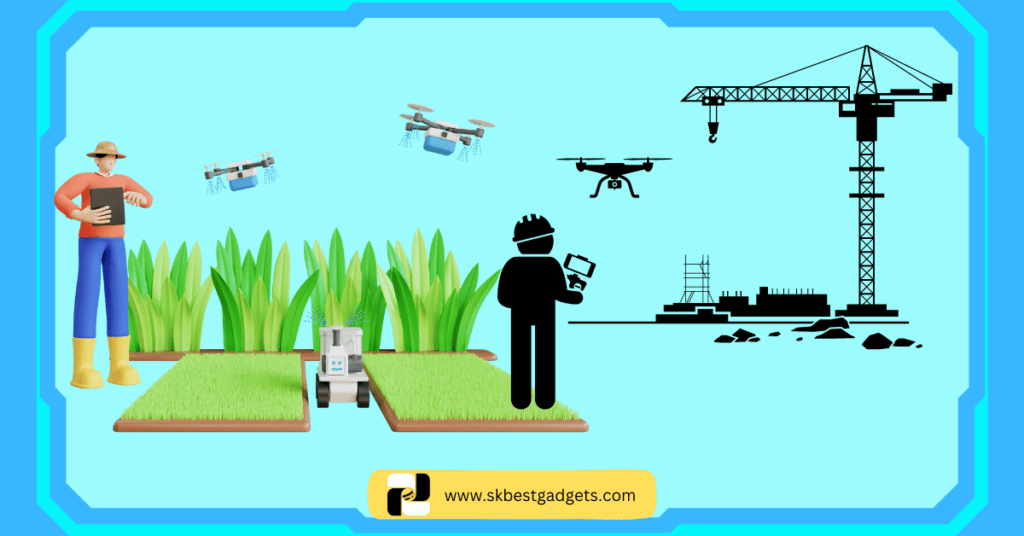
To make the most of drones in farming, pick the right drone and sensors, and have some detailed rules for how to use them. It’s like having a farming superhero in the sky!
Construction Superheroes: In construction, drones are like your eyes in the sky. They’re great at grabbing data about your site, like what the land looks like and how things are progressing.
With all that info, you can build super-accurate 3D models that help you plan and make smart choices. Plus, they keep tabs on how your construction projects are going, so you can catch problems early and fix them.
To make the most of drones in construction, choose the right drone and sensors, and have a game plan for using them. It’s like having your construction superhero squad!
Follow these tips, and you’ll be a drone master in farming and construction, boosting your productivity like a champ!

Regulations and Safety
You know what? Without the regulations, you won’t be able to fly your drone anywhere. So please fly your drone legally not illegally. If you want to know information about this then keep reading.
What are the current drone regulations in my country?
Let’s talk about rules because they can be as different as night and day depending on where you want to fly your drone.
World of Differences: Drone rules aren’t a one-size-fits-all deal. Some places are super chill, while others are a bit more uptight. In general, most countries want you to register your drone and play it safe. That means flying low, keeping an eye on your drone, and steering clear of people and airports.
Euro-Style: Over in Europe, they’ve got some common rules thanks to the European Union Aviation Safety Agency (EASA). But, there’s room for countries to add their twists.
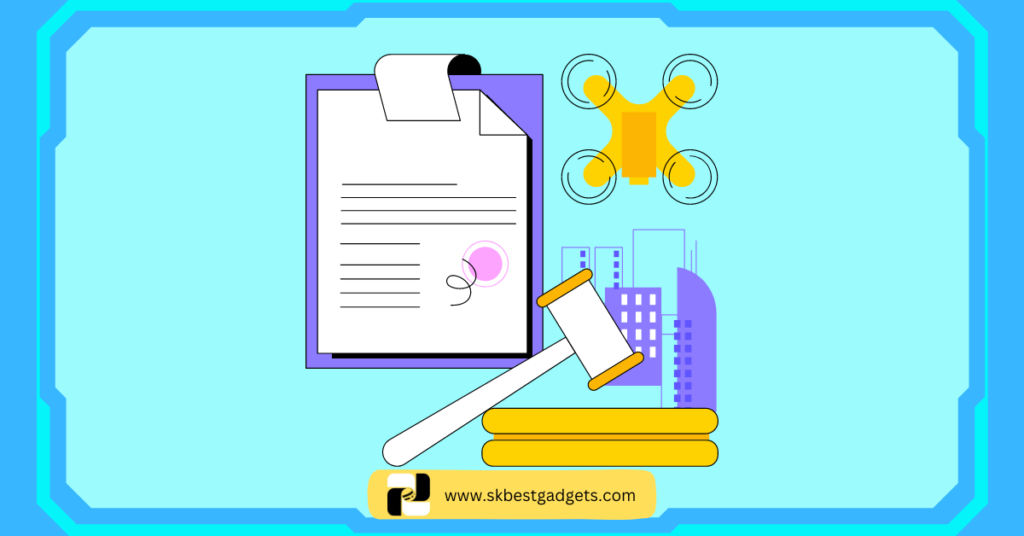
USA Vibes: In the good ol’ USA, the Federal Aviation Administration (FAA) is the boss of the skies. Register your drone, stay under 400 feet, and don’t lose sight of it – that’s the name of the game.
South American Adventure: Head south to places like Brazil, Colombia, Peru, Suriname, and Venezuela, and you’ll find a warm welcome for drones. Just be ready for some paperwork and basic rules.
But here’s the thing: drone rules are like the weather, always changing. So, before you take a flight, make sure to check the latest rules in the country you’re exploring.
How can I obtain the necessary licenses or permits for commercial drone use?
To fly a drone for business purposes in the USA, you need something called a Remote Pilot Certificate from the FAA (Federal Aviation Administration). This certificate shows that you know the rules, how to operate drones safely, and all the procedures involved.
To get this certificate, you’ve got to be at least 16 years old, know how to read, speak, write, and understand English, be fit both physically and mentally for drone flying, and pass a test about aeronautical knowledge.

Here’s how you go about it: First, you need to get an FAA Tracking Number (FTN) by setting up a profile in something called IACRA (Integrated Airman Certification and Rating Application) before you even think about taking the test.
Then, you’ve got to book an appointment with a testing center approved by the FAA and take your government-issued ID along. Once you pass that aeronautical knowledge test, you need to fill out FAA Form 8710-13 for your remote pilot certificate using the IACRA system.
After you clear a TSA security check, you’ll get an email telling you how to print a temporary certificate from IACRA. The official certificate will show up in your mailbox once all the FAA processing stuff is done.
Keep in mind that the rules and steps for getting a commercial drone license can be different in other countries. So, always check the local rules before you start the process anywhere else.
What safety precautions should I take when flying near people or buildings?
Flying your drone near people or buildings can get a bit tricky, and you want to keep things safe and smooth. Check out these easy safety tips for when you’re buzzing around people and structures:
- Stay a Good Distance Away: It’s a no-brainer, but always make sure you’re a good distance from folks, cars, and buildings that aren’t under your command. The exact safe zone might vary depending on where you’re flying, so peek at the local rules.
- No Crowds, Please: Here’s a golden rule – don’t fly your drone over big groups of people who aren’t part of your drone mission. Safety first, and also, it’s just polite.
- Weather Watch: Keep an eye on the weather. Wind and rain can be a real buzzkill for your drone fun. Don’t push it when the wind’s strong or the rain’s heavy, especially if you’re near buildings.
- Tech Check: Sometimes, things like wind or wonky radio signals can mess with your drone’s mojo. Be mindful of these tech hiccups and do your best to deal with them.

By keeping these simple tips in mind, you’ll have smooth and safe flights, even near people and buildings.
Comparing Drone Models
Now let’s compare some drone models and also let me tell you what drones are best for beginners, what features specifically you should look for in a drone for aerial photography, and also the price range for drones.
Which drones are best suited for beginners?
Looking to kickstart your drone adventure? Well, you’re in luck because there are plenty of drones out there tailor-made for beginners. These bad boys are all about easy flying, with controls that practically read your mind and nifty safety features to keep you out of trouble.
Now, if you’re after the cream of the crop, the DJI Mini 3 is stealing the show, according to the folks at TechRadar. It’s a featherweight champ with a foldable design, controls that feel like second nature, and a camera that snaps sweet pics. For newbie drone enthusiasts, it’s the real deal.
But, hang on a second! If you’re keeping a close eye on your wallet, the Ryze Tello is the wallet-friendly wonder you’ve been waiting for. It’s as light as a feather at 80g and can be piloted with your trusty smartphone.

Just remember, the perfect drone for you depends on what floats your boat and your budget. Some are all about capturing epic aerial shots, while others are built for racing or educational fun.
Before you dive into the drone world, take a moment to think about your goals and do a bit of research. Trust us, there’s a beginner drone out there with your name on it!
What features should I look for in a drone for aerial photography?
Looking to snag a drone for some epic aerial photography? Well, hold on to your hat because there are a few things you’ll want to keep in mind, no need for the formal tone here!
First off, let’s talk about picture quality, ’cause that’s the name of the game. A bigger sensor is your buddy when you want those top-notch shots, especially in dim lighting. These days, drones with 1-inch sensors are all the rage. They strike a sweet balance between superb picture quality and easy portability.
Now, if you’re dreaming of creating cinematic masterpieces, you’ll want a drone that can shoot in 4K. More pixels equal crisper, more detailed videos for your editing pleasure.
Speaking of editing, here’s a gem: Find a drone that supports RAW/DNG format for your photos. That means you’ll have all the juicy data straight from the camera’s heart, giving you mad flexibility when you’re tweaking those pics.

Hold up, we’re not done yet. You’ll want a drone that can hang in the air like it’s no big deal. Stable hovering is key for getting those sharp, clear shots.
And hey, don’t forget the basics like flight safety, how it transmits data, any smart features it brings to the table, and of course, how easy it is to lug around. Think about all this jazz, and you’ll be soaring high with a drone that’s perfect for your aerial photography adventures!
What is the price range for drones with specific capabilities?
Let’s break it down in a more chill way:
So, you’re on the hunt for a drone, but here’s the deal – the price tags can go all over the place, depending on what these bad boys can do.
If you’re just dipping your toes into the drone world and looking for something basic, you can snag an entry-level drone for as low as 20 bucks. These are like the rookies of the drone squad, easy to fly and great for beginners.
Now, if you’re after a bit more oomph, the ones with cool stuff like GPS wizardry, dodging obstacles like a ninja, and top-notch cameras will set you back between $500 and $1500. These are the go-to picks for snapping stunning aerial photos and videos without breaking the bank.

But, hold onto your seats, because if you’re in the big leagues, the professional-grade drones with all the bells and whistles, like super long-distance flying and Hollywood-worthy cameras, can hit you for several grand.
These are the big shots used by pros in photography, filmmaking, and even serious businesses like farming and construction.
The bottom line, the drone price game is all about what you need and how deep your pockets go. Make your move wisely!
Drone Maintenance
Along with everything, if you know the maintenance of anything, then that can live with your age. On the other hand, if you don’t know the maintenance, then it won’t be easier for you to use it. So let’s know the drone maintenance.
How should I clean and maintain my drone’s propellers and motors?
Keeping your drone’s propellers and motors in top shape is crucial for safe and smooth flying. Here’s what you need to know:
Cleaning the propellers: Start by taking off the propellers from your drone. Grab a soft brush or cloth and gently clear off any dirt or gunk stuck to the blades.
If they’re seriously grubby, a mild soap and water mix can do the trick. Just make sure to rinse them well and let them dry completely before putting them back on.

Checking for damage: Regularly give those propellers a once-over for any cracks or chips. If you spot any damage, don’t wait – replace them ASAP. Damaged propellers can mess with your drone’s performance and might even lead to a crash.
Lubricating the motors: Your drone’s motors need a little TLC too. Use a good-quality drone-friendly lubricant, sparingly applied to the motor bearings. Stick to the manufacturer’s instructions for this.
Checking for wear: As time goes on, your drone’s motors might start showing signs of wear and tear. If you notice weird noises, vibrations, or the motors running hot, it’s a sign that they might need replacing.
Follow these tips, and you’ll keep your drone flying safely and smoothly.
What are the best practices for storing a drone when not in use?
When you’re putting your drone on the shelf for a while, there are some easy steps to make sure it stays in top shape for its next flight:
- Pop out the Battery: Before you stash your drone, take out the battery. It helps keep both the battery and the drone safe. Store the battery somewhere cool and dry, away from any blazing sun or heaters.
- Give It a Quick Clean: Spend a minute or two giving your drone a once-over with a soft brush or cloth. Get rid of any dirt or gunk that’s collected on the body, propellers, and motors. This keeps corrosion and damage at bay while it’s in storage.
- Wrap It Up: Your drone deserves some protection from dust, moisture, and other nasty stuff that can ruin its day. Grab a protective case or bag that’s made for your drone model. It’ll keep your drone snug and safe during its downtime.
- Find the Right Spot: When picking a spot for your drone’s timeout, aim for somewhere cool, dry, and away from direct sunlight or heaters. Avoid damp or humid places – they’re no good for drones and can lead to all sorts of trouble.

Just follow these simple steps, and your drone will be raring to go when you’re ready for your next adventure.
Are there any software updates or firmware upgrades I should be aware of?
Don’t forget to keep your drone up-to-date! Checking for software updates and firmware upgrades is key to keeping your drone running smoothly and trouble-free. Here’s the lowdown:
- Stay in the Loop: Keep an eye out for updates from your drone’s maker. These tweaks can boost your drone’s performance and fix any pesky issues. How you do this depends on your drone’s make and model, so give the user manual or the manufacturer’s website a quick browse for the scoop.
- Timing is Everything: Most drone companies drop updates now and then, so it’s smart to nab them as soon as they land. Some drones even have a nifty auto-update feature that pings you when there’s something new to install. Others might need you to grab the update and do the deed manually using your computer or mobile device.
- Handle with Care: When it’s update time, stick to the maker’s instructions to a T. Slip-ups can mean damage to your drone or even data loss. Back up anything important before hitting that update button, and don’t forget the safety precautions.
With regular software and firmware updates, your drone will keep flying like a champ.

Important FAQs
What are some common mistakes to avoid when flying a drone for the first time?
How can I calibrate my drone for better flight performance?
What are the best practices for capturing stunning aerial photos with a drone?
What should I consider when choosing a drone for aerial photography?
What are the best practices for flying drones in different weather conditions?
How can I obtain the necessary licenses or permits for commercial drone use in the USA?
What safety precautions should I take when flying drones near people or buildings?
What are the price ranges for drones with specific capabilities?
Final Thoughts
In this all-encompassing guide, we’ve taken you from the very basics of drone flying to uncovering its amazing potential across various industries. Whether you’re a newbie itching for that first flight or a seasoned pro looking to up your game, we’ve got it all covered.
Safety is our top priority in the world of drones. Getting a grip on the rules and playing it safe in the skies, along with respecting your surroundings, are crucial steps to becoming a responsible drone pilot.
As you set off on your drone adventures, don’t forget to chime in with your experiences and questions in our lively community.
We’d love to hear your thoughts, tips, and stories in the comments below. Your insights can be a guiding light for others on their drone journey, and we’re here to back you up every step of the way.
If you found this guide useful, think about passing it on to your buddies and fellow drone enthusiasts. Sharing knowledge is an awesome way to grow our drone family and inspire others to explore the skies with safety and creativity in mind.
Big thanks for being part of SK Best Gadgets, where our mission is to make drone tech accessible to everyone. Keep an eye out for more exciting articles, nifty tips, and honest reviews to fuel your drone passion.
Watch This Video As Well:
Best Freelance Drone Jobs in 2023 (What are the Requirements?)
Dreaming of flying high with a drone gig? 🚁✨ Dive into this article on the “Best Freelance Drone Jobs in 2023” to find out whatit takes to make your dream job a reality! 🌟

